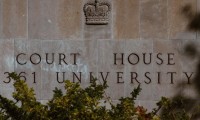Our firm was successful at trial in arguing that commercial tenants can be found to be an occupier of a city sidewalk, in a recent ruling made by The Honourable Madam Justice Sanderson in Mackay v. Starbucks.
In an excerpt from the decision:
Considerations and Conclusions on Whether Starbucks was an Occupier of the Sidewalk
[103] I have found that Starbucks expected that in the morning hours, many of its customers would drive to Hammersmith, park, cross over the sidewalk through the gap in the fence and enter its store. They would exit using the same path. [104] I have found that by building its patio and configuring its fence in the manner that it did, for its own commercial benefit, Starbucks created a pathway that extended in a straight line from its side door, across its exclusive use patio and continued over the city sidewalk, Starbucks knew that that pathway was used by many of its customers, and only by its customers. [105] But for Starbucks actions, customers entering its store, including the Plaintiff, would not have been on the sidewalk at all. [106] The use of the sidewalk Starbucks created was unrelated to other uses of the municipal sidewalk in the ordinary course. [107] By its actions, Starbucks effectively directed all of its customers entering and exiting its store on the Hammersmith side to use that area of the sidewalk. It effectively controlled their access route and ensured that they would walk on the pathway it had designated, including on that portion of the sidewalk. [108] In my view, in the area of the sidewalk shown on Exhibit 7, Starbucks took upon itself a sufficient level of possession and control that it was feasible for it to ensure that it was safe for its customers. Even though Starbucks had no duty [as an owner] under the city by law to clear salt and sand the sidewalk, it did so in the area of the pathway that it had created. In that area, by reason of its actions, it can fairly be said that Starbucks appreciated that it had duty to take reasonable steps to protect the safety of its customers. [109] While Starbucks may not have appropriated the area of the sidewalk for its exclusive use, I accept the evidence of Brian McIneray, that in the mornings, Starbucks customers parking on Hammersmith, crossing the sidewalk constituted most of the users of the sidewalk in that area. Like the users of the Skydome walkway in Moody, customers of Starbucks had almost exclusive use of the sidewalk in that area. [110] In summary, by building its fence and patio in the manner that it did, by making a path over the sidewalk leading directly to its side door, by monitoring the condition of the pathway, by clearing, salting and sanding it to be sure it was safe for its customers, and by directing the ingress and egress of its customers in the manner that it did, Starbucks assumed sufficient control over the sidewalk and the persons it allowed to enter its premises using the sidewalk, to come within the definition of Occupier under s1 of the Occupiers’ Liability Act.



